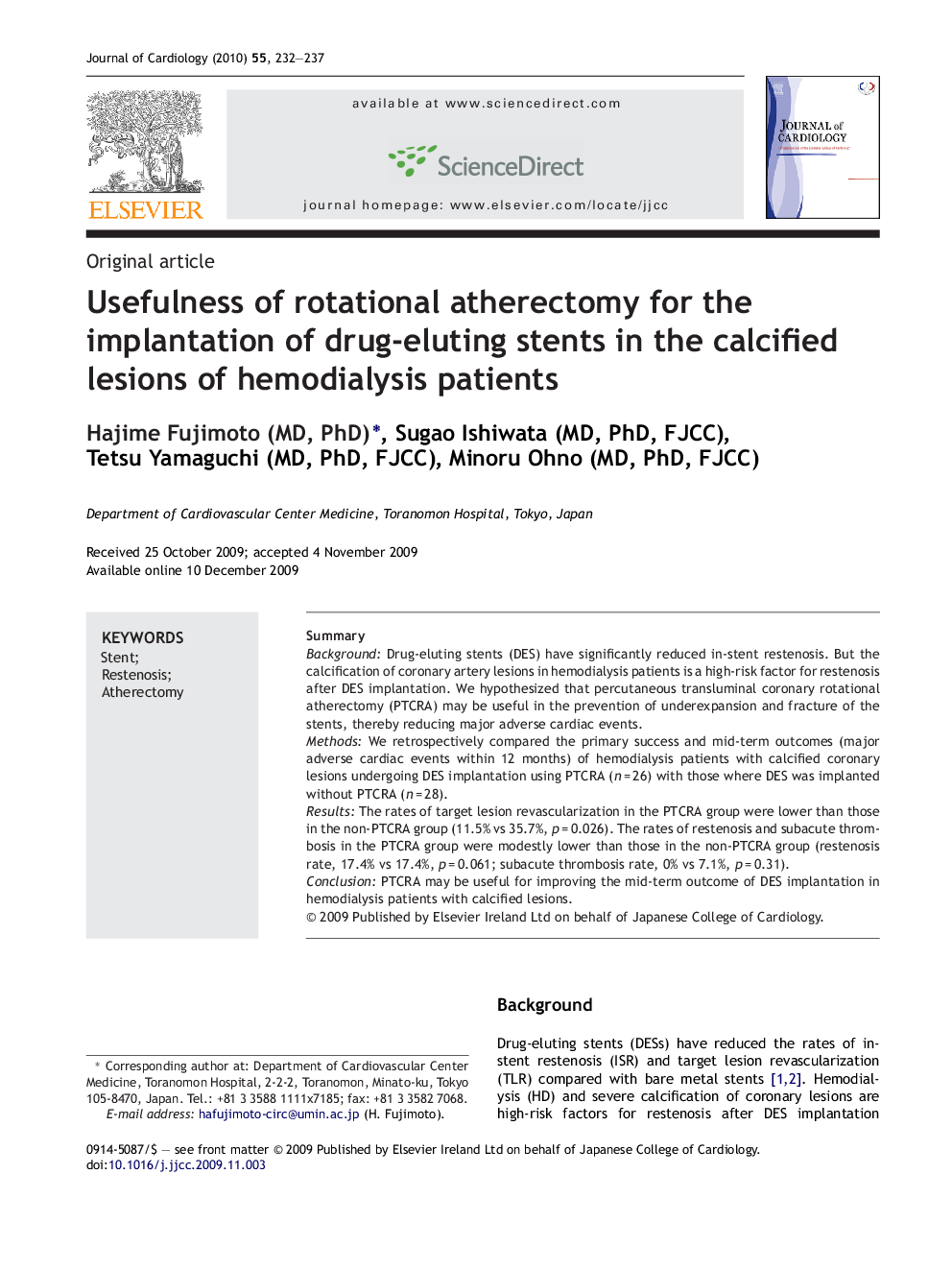| Article ID | Journal | Published Year | Pages | File Type |
|---|---|---|---|---|
| 2963666 | Journal of Cardiology | 2010 | 6 Pages |
SummaryBackgroundDrug-eluting stents (DES) have significantly reduced in-stent restenosis. But the calcification of coronary artery lesions in hemodialysis patients is a high-risk factor for restenosis after DES implantation. We hypothesized that percutaneous transluminal coronary rotational atherectomy (PTCRA) may be useful in the prevention of underexpansion and fracture of the stents, thereby reducing major adverse cardiac events.MethodsWe retrospectively compared the primary success and mid-term outcomes (major adverse cardiac events within 12 months) of hemodialysis patients with calcified coronary lesions undergoing DES implantation using PTCRA (n = 26) with those where DES was implanted without PTCRA (n = 28).ResultsThe rates of target lesion revascularization in the PTCRA group were lower than those in the non-PTCRA group (11.5% vs 35.7%, p = 0.026). The rates of restenosis and subacute thrombosis in the PTCRA group were modestly lower than those in the non-PTCRA group (restenosis rate, 17.4% vs 17.4%, p = 0.061; subacute thrombosis rate, 0% vs 7.1%, p = 0.31).ConclusionPTCRA may be useful for improving the mid-term outcome of DES implantation in hemodialysis patients with calcified lesions.
